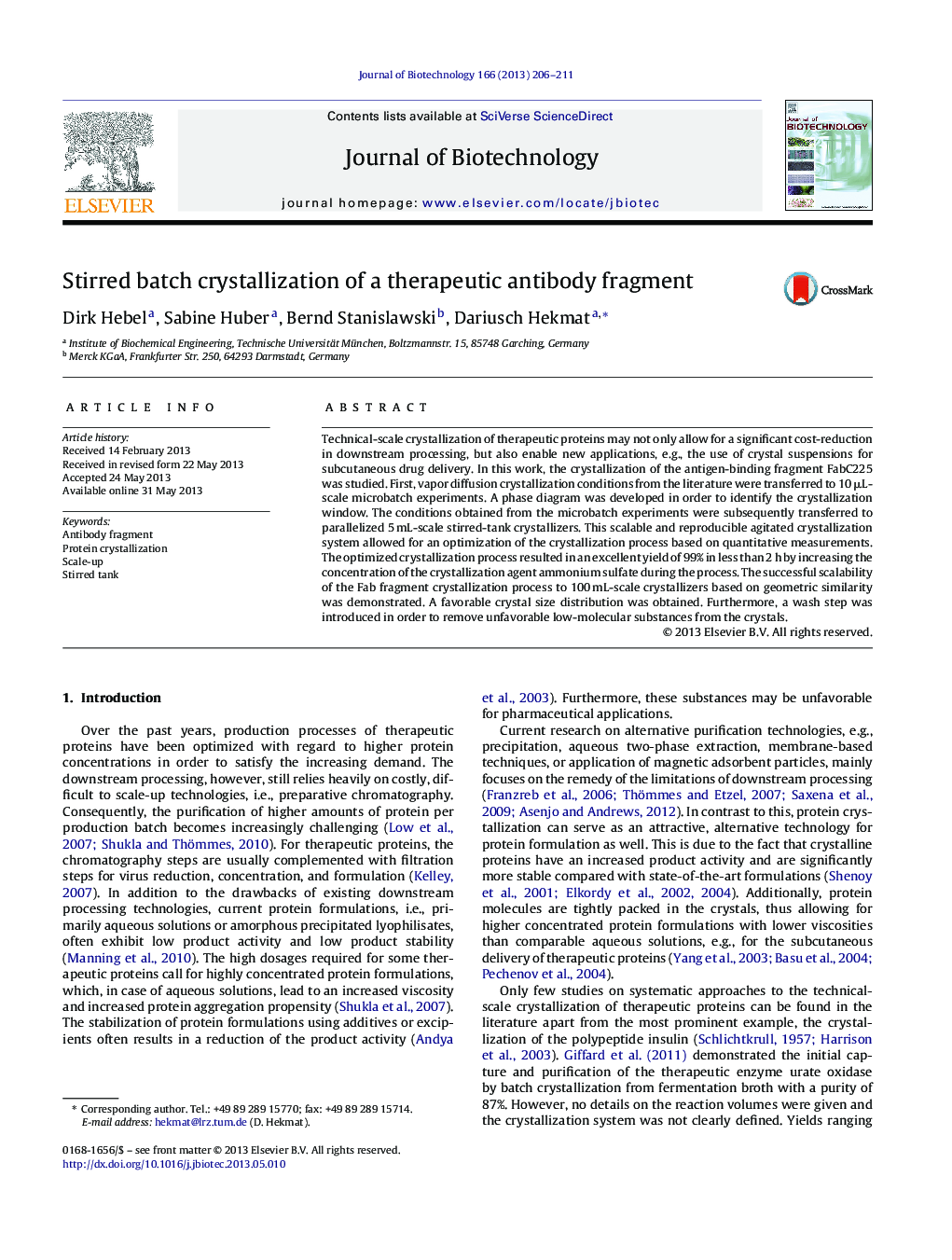| Article ID | Journal | Published Year | Pages | File Type |
|---|---|---|---|---|
| 23493 | Journal of Biotechnology | 2013 | 6 Pages |
•The crystallization of the antigen-binding fragment FabC225 was studied.•Conditions from microbatch experiments were transferred to mL-scale stirred tanks.•The stirred-tank crystallization system allowed for an optimization of the process.•Successful scalability of the crystallization process was demonstrated.•Protein crystallization can be a viable alternative to preparative chromatography.
Technical-scale crystallization of therapeutic proteins may not only allow for a significant cost-reduction in downstream processing, but also enable new applications, e.g., the use of crystal suspensions for subcutaneous drug delivery. In this work, the crystallization of the antigen-binding fragment FabC225 was studied. First, vapor diffusion crystallization conditions from the literature were transferred to 10 μL-scale microbatch experiments. A phase diagram was developed in order to identify the crystallization window. The conditions obtained from the microbatch experiments were subsequently transferred to parallelized 5 mL-scale stirred-tank crystallizers. This scalable and reproducible agitated crystallization system allowed for an optimization of the crystallization process based on quantitative measurements. The optimized crystallization process resulted in an excellent yield of 99% in less than 2 h by increasing the concentration of the crystallization agent ammonium sulfate during the process. The successful scalability of the Fab fragment crystallization process to 100 mL-scale crystallizers based on geometric similarity was demonstrated. A favorable crystal size distribution was obtained. Furthermore, a wash step was introduced in order to remove unfavorable low-molecular substances from the crystals.
